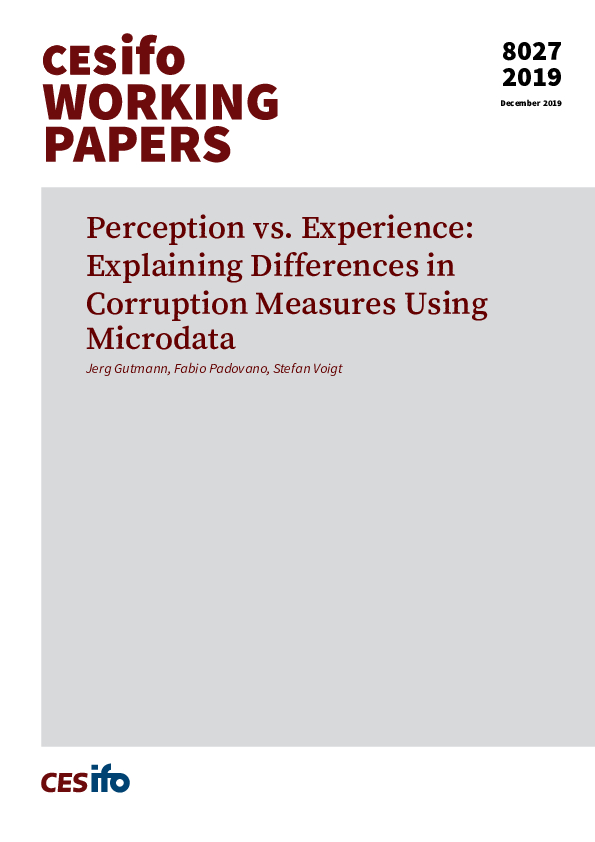Perception vs. Experience: Explaining Differences in Corruption Measures Using Microdata
CESifo, Munich, 2019
CESifo Working Paper No. 8027

Understanding corruption is at the heart of treating the dysfunctionality of many countries’ public sectors. Yet, most corruption research suffers from one common problem: There is no “objective” measure of public-sector corruption for a cross-section of countries. Most studies on the determinants or the effects of corruption rely on indicators of corruption perception. In recent years, a second type of indicator reflecting stated experiences with bribery has become available. If corruption perception is primarily informed by experience with corruption, these two types of indicators should be very highly correlated. In fact, they are not. This paper deals with the divergence between these two types of corruption indicators. We examine the variation in individual corruption perception that cannot be explained by individual corruption experience alone. We find that both respondent characteristics and country characteristics affect corruption perception beyond what can be explained by individuals’ first-hand experience of corruption. Some of these biases may force us to reevaluate results of corruption research that is based on perception data, as well as the anti-corruption policies designed after these results.
Public Choice